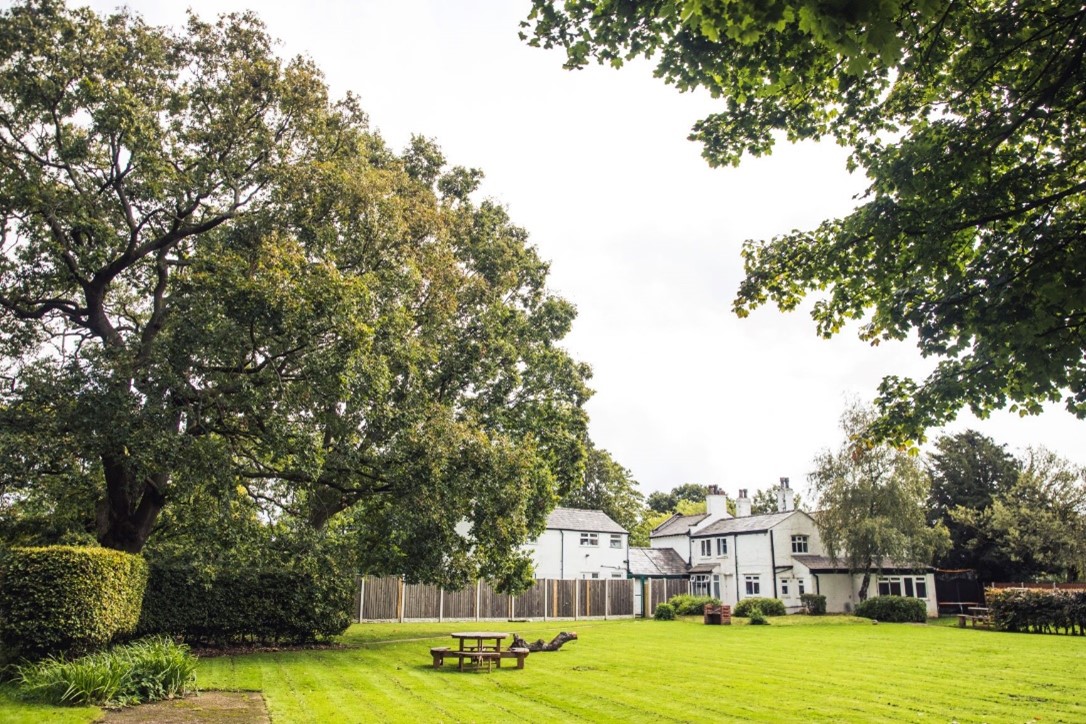
Children need children
Halliwell’s Restorative Parenting Recovery Programme works with five- to 12-year-olds who have experienced trauma and rejection, to build therapeutic relationships, learn how to form and maintain healthy attachments, promote positive education and encourage positive lifestyle choices. A central pillar of the 18- to 24-month, trauma treatment programme is the use of larger homes, which range from seven to 10 bedrooms.
Within larger groups, there are more opportunities for children to develop psychological wellbeing, explains Dr Fenella Quinn, Halliwell’s clinical director. “It is a well-known saying from the therapeutic community literature that it is the group that heals,” she says. “If you think about it, for children the most important people to them are often other children, and it is with other children that kids can learn to play, share, communicate, collaborate, and so many other vital skills for living.” In bigger homes, children have access to adults that can recognise their needs and support them, but they do not have to feel like they are constantly at the centre of adult attention.
“Lots of children come to us because they can’t deal with the intensity of a foster family,” says Dr Quinn. “Having lots of children and adults around allows them to gravitate towards the level of intimacy that they can cope with at any point in their progress through our programme.” With the support of Halliwell’s therapeutic parents, children can start to form relationships with their peers, learning how to play together. “We see children forming bonds which mean everything to them – in a smaller home with only two other children there might not be that opportunity to make a friend,” observes Dr Quinn.
Larger groups allow children to learn about negotiation and compromise by working co-operatively with each other, and about appropriate behaviour and social skills by watching others. They discover they are not the only ones challenged by the trauma of rejection, and can be motivated by other children to take part in activities. Importantly, they can learn the skills of falling out and making up with others, without feeling isolated, because there is always another child to hang out with. “They will be well prepared for larger social and educational settings where there are many children because they have learned to share and feel that their needs can still be met,” says Dr Quinn. “All these social, emotional and behavioural skills support the development of resilience, and contribute to successful step-across to mainstream education and fostering.”

Bigger is better
On a practical level, larger homes are more likely to have extensive outdoor space, providing children with more opportunities for play and socialising with each other. In a bigger house children can find their own space, whether they need to be with others or to spend time on their own.
Halliwell carefully designs the interior of its homes and the timetable of the day to stop children from becoming overwhelmed by too many people milling about. Staff can use different areas of the home to ensure every child gets their needs meet. Large dining room tables, for example, can seat all the children and therapeutic parents together, in order to provide an all-important opportunity for shared meals, discussion and debate, which in turn engenders the feelings of belonging to a coherent group. Therapeutic parents can also stagger mealtimes, bath times and bedtimes if necessary to ensure the needs of all the children are met, regardless of their emotional and developmental stage. There is also a wider choice of bedrooms, small and large, so children can be allocated the best possible room to meet their needs.
Larger homes also allow for the location of a small school on the same site. Children who may not be able to cope with mainstream education can attend the on-site school until they are ready to move on, generally after 12 to 15 months. Halliwell’s children have an average school attendance of 97 per cent. “The vast majority make significant academic progress which is equal to or faster than national requirements,” says Dr Quinn.
Value for money
Larger children’s homes also have financial advantages. Low occupancy homes are not always financially effective models for childcare, as the majority of fees are spent on staff and general operational costs. Halliwell is able to reinvest the savings afforded by economies of scale into research and development, and the employment of a highly-qualified, psychology-led clinical team whose members teach, facilitate and consult with therapeutic staff.
Myth busting
“There is a myth that smaller children’s homes perform better when actually there is no evidence to support that,” says David Sheffield, Halliwell’s managing director. “In fact the opposite is more likely to be the case.” An analysis of Ofsted ratings from 2019 shows that seven-to-10 bedded homes actually performed slightly better than smaller homes with 88 per cent rated Good or Outstanding, compared to 83 per cent. “Bigger homes might be more challenging to run,” says Sheffield. “But when they are run well the benefits they offer simply cannot be replicated in smaller homes.”
Further information
- www.halliwellhomes.co.uk
- To find out more about placing a child on the programme contact: referrals@halliwellhomes.co.uk or 0161 278 2531
- The Therapeutic Potential of the Larger Home, Dr Fenella Quinn, Halliwell
- Security and the Social Mind: Attachment and Therapeutic Communities, Gwen Adshead, Therapeutic Communities: the International Journal for Therapeutic and Supportive Organizations, April 2005
- The Quintessence of a Therapeutic Environment, Rex Haigh, Therapeutic Communities: the International Journal for Therapeutic and Supportive Organizations, April 2013

